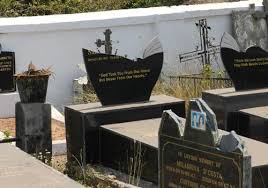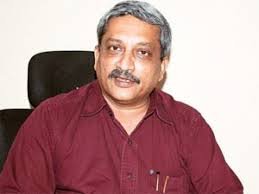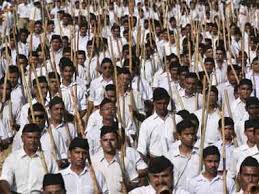
In its reported response to t
he violations in Curchorem, the Archdiocese has rather appropriately
advised restraint in expressing their “justified anger”.
We could quibble however, over the emotion
that is being referenced. Should we be angry? Or should we be upset and hurt?
Anger seems to suggest a certain right to retaliation, one that in this case we
have been asked to necessarily restrain. Hurt on the other hand seems to be more
appropriate since it suggests the vulnerability of the person who has been the
victim of the attack, while opening up, in a rather Christian manner, the
possibility for reconciliation, necessary to sustain the environment for happy
coexistence in the State.

However, this column would not
like to dwell on semantics, nor on an exploration of the appropriate emotional
response open to a Catholic in this situation. What this column would rather do
is explore the explanations that are being provided for the unhappy incident in
Curchorem. The logical response has been that such actions could not possibly
be the work of the BJP, therefore, it must be the handiwork of the Congress,
smarting under the humiliation of their rejection at the polls. The deplorable
actions in Curchorem, this strand of logic informs us, were an attempt to
embarrass Mr. Manohar Parrikar, our Chief Minister, and send
a warning to the electorate ‘be prepared for the mess that you have invited upon yourselves’.

This could be one explanation. However
this should not limit the field of possibilities that we entertain. Any
investigation, criminal or social, should ideally open itself up to all
possibilities, even the improbable if it would like to ensure a clearer
conceptualization of the subject. This is what this column will attempt. If
commonsense tells us that the BJP would not engage in such an obviously
ill-timed exploit, and therefore it must be the work of the Congress party, then this column will go on to contradict commonsense and
suggest some counter-intuitive possibilities.

This exploration must begin
however may suggesting that it would indeed be ridiculous to suggest Mr.
Parrikar’s hand in the affair. The suggestion must come not because we know Mr.
Parrikar is clever enough to not encourage such an action so soon after his
election, but because we know, from personal and private estimations of Mr.
Parrikar, that he would not stoop to such a possibility. Mr. Parrikar may have
an ideological agenda rooted in the vision of the saffron organizations in the
country, but it appears that this vision extends to the centrality of the Hindu
as a citizen of this country, and a disciplining of the population to making
them have a sense of civic consciousness. We can dispense then, with the thought
of Mr. Parrikar being culpable.
We could also perhaps dispense
with the possibility that the BJP, at an organizational level has had any hand
in the actions in Curchorem. To be sure, one can suggest that the BJP
orchestrated this entire event so as to show up the CM as a caring man,
outraged by the incident and thus gain brownie points. This possibility is too patently bizarre to
contemplate, and if true, would be simply grotesque. If such be the case, we
would as a society (not merely as Catholics and Muslims) have to really gird
our loins for the storm that should come. For now, this seems unlikely.

There is a need however, for the
popular imagination to make a distinction between the BJP as an organization,
an electoral party that seeks to come to power on a certain agenda, with a
vision that has definite supporters, and other right-wing Hindutva organizations.
We often make the mistake of assuming that the BJP is representative of the big
bad guy. This would perhaps, be a conceptual error. We have to recognize that
with the successful rooting of the Hindutva ideology in the Indian polity there
are many more players in the field than just the BJP.

Let us take the example of Pramod
Muthalik’s Sri Ram Sene. We cannot forget the incident in 2009 where the Sene
rose to national attention for beating-up women and men, for engaging in the
un-Indian activity of women drinking in pubs. The question we need to ask is
how far was the Ram Sene under the control (at an organizational level) of the
BJP, or indeed even of the RSS? Similarly, let us take the examples of the bomb
blasts that have been occurring all across the country, whether in Hyderabad,
or Pune, or Malegaon, where the perpetrators have been (surprise, surprise) not
Muslim fundamentalist groups, but Hindu fundamentalist (Hindutva) groups like
the Abhinav Bharat. We could even look to occurrences in Goa where the works of
Dr. Subodh Kerkar, celebrating the diversity of the Ganesh icon, was met with a
violent response by the Hindu Janajagruthi Samiti. In a highly volatile, and politically
competitive, environment, how obedient are these groups to the BJP or the RSS,
even if they are linked, at some organizational, or ideological level?

In such a situation, could we
postulate that these diverse saffron groups (and they are very active in Goa)
have equated the BJP victory with the raising of the saffron flag over Goa, and
are now flexing their muscles, assuming their protection by the BJP controlled
governmental apparatus? Goa’s case is different (as we as a society are so fond
of repeating) but in light of the State’s quiet acquiescence, both in Gujarat
and in Karnataka, these groups would have good reason to believe that it is
open season for minority hunting, and that the State machinery will not
necessarily act on them. Curchorem is not a bad place to symbolically and
effectively begin such hunting given the manner in which sectarian tensions
have been systematically stoked in that little town.

In conclusion, it may very well
be that the whole episode is, as word on the street goes, a Congress
orchestrated incident to upset the new balance of power in the State. However,
any good investigation would explore all possible options, and as was pointed
out in an earlier column, we need to be aware that there is more to politics
that elections, and that the diversity of political players is not exhausted by
political parties, and that the contests in our country and our state are not
exhausted by a simple binary exhausted in the Congress-BJP rivalry.
If indeed it turns out that the
incident in Curchorem was the result of Hindutva groups, then the Parrikar
government would have one more agenda clearly outlined on its plate; a stern
controlling of these groups, an action that was not taken seriously in any form
by the Kamat-led government. Given that the BJP has promised its actions to be
contrary to those played out by the previous government, we know that we will
see action on this front as well.
( A version of this post was first published in the Gomantak Times 14 March 2012)

No comments:
Post a Comment